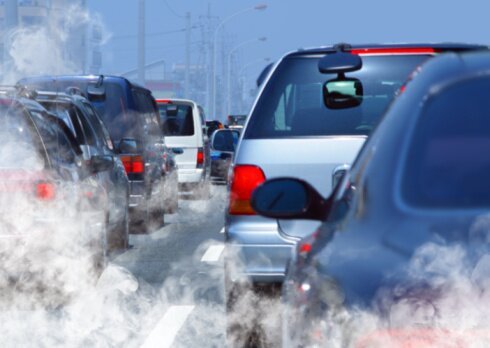How Indoor Air Pollution Can Affect Your Health
Recently, I told you about a study that found a strong link between the highest levels of fine particulate air pollution, known as PM2.5, and death rates from heart and respiratory diseases.
In addition, researchers at King’s College London also recently confirmed that high levels of toxic air particles from vehicle combustion engines are associated with an increase in hospitalisations and deaths from heart or lung disease in children and younger adults.
Both these studies focused on outdoor air pollution, which leaves the question: What is the impact of indoor air pollution on our health?
All I need is the air that I breathe…
According to recent figures from the International Agency for Research on Cancer as well as the World Health Organisation (WHO), 80 per cent of all cancers can be attributed to environmental factors, including exposure to carcinogenic chemicals, many of which are found in household cleaning products. The WHO also estimates that almost 3 per cent of the global burden of disease is due to indoor air pollution.
One of the primary culprits behind indoor air pollution is inadequate ventilation, especially in densely-populated cities where a lack of air conditioning and high levels of humidity can also increase concentrations of pollutants inside.
Other sources of indoor air pollution include gases from cooking and heating, chemicals from candles and household cleansers, mould and mildew and a host of toxins from building and DIY materials.
In fact, evidence suggests a strong link between household paint, cancer and infertility. There are numerous hazardous chemicals in conventional paint. Those identified to cause harm are known as ‘volatile organic compounds’ or VOCs. These VOCs are derived from petrochemicals and readily release vapours (outgassing) at room temperature, which seriously affects indoor air quality.
And if you’re thinking that outgassing only happens the first few days after you’ve given your living room a fresh lick of paint, think again… Outgassing can continue for months (sometimes even years) after painting… and new-built homes that are super-airtight lock those paint vapours in even more.
But it’s not just paint that releases harmful VOCs. Air fresheners, foam upholstery, wood finishes, wire coatings and even sealants all release VOCs. In another study, published in the Archives of Environmental Health, researchers at the University of Bristol examined the effects of VOCs on mothers and infants. For the study, more than 10,000 mothers responded to questionnaires regarding the use of products known to raise VOC levels, including household products like air fresheners.
The Bristol team found that in homes where air fresheners were used daily, mothers averaged nearly 10 per cent more frequent headaches than mothers in homes where air fresheners were used once a week or less
In addition, in the daily homes, mothers had a 25 per cent higher risk of depression and infants were 32 per cent more likely to suffer from diarrhoea compared to mothers and infants in the once a week homes. But there is more to indoor air pollution than headaches, depression and diarrhoea. In the short-term it can cause irritated or dry mucous membranes in the eyes, nose, respiratory tract and throat. It may also cause dizziness, fatigue, fever, forgetfulness, headaches, irritability, lethargy and nausea.
Researchers have also found that childhood diagnoses of allergies, autism, Asperger’s and Tourette’s syndrome could be linked to indoor pollutants such as dust, phthalates, PVC flooring and second-hand smoke.
Did you find this information useful?
Then why not get more expert health recommendations just like this delivered direct to your inbox?
"It is truly refreshing to read a newsletter on the topic of alternative medicine which is scientifically based and reviewed by professionals..." - Robert Sinott
We respect your privacy and will never share your details with anyone else.Disclaimer: Bear in mind the material contained in this article is provided for information purposes only. We are not addressing anyone’s personal situation. Please consult with your own physician before acting on any recommendations contained herein.
Sources:
Indoor Air Pollution Worse Than Outdoor, published online, draxe.com
Painting by Poisons, by Joanna Evans, published February 2009, What Doctors Don’t Tell You, vol. 19 no. 11
Environmentally Friendly, Non Toxic Paint, published online, sustainablebuild.co.uk
- Comments (3)
- Facebook Comments (0)













I think all the deodorants and fabreze product people use in their houses is very unhealthy. I also don’t like the sickly sweet smell of most of them.
Is there anywhere that we are safe and free from pollution or toxins?
Well done for raising awareness of Indoor Air Pollution I think it is essential that to talk about PM1 and make the public aware that it is PM1 that damages your health.